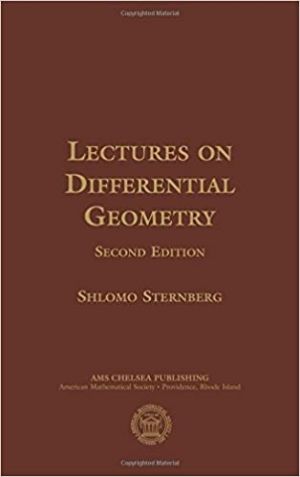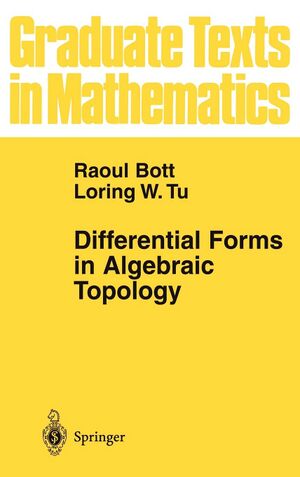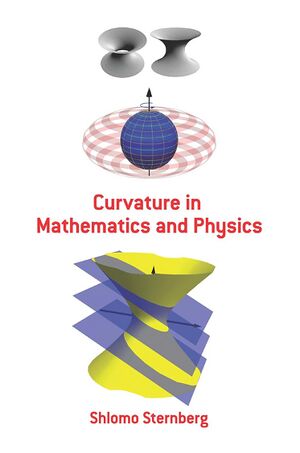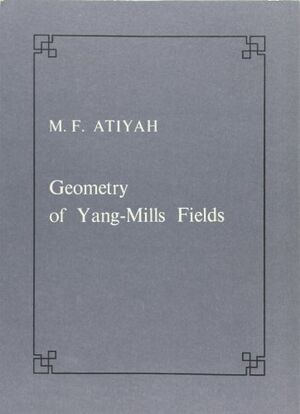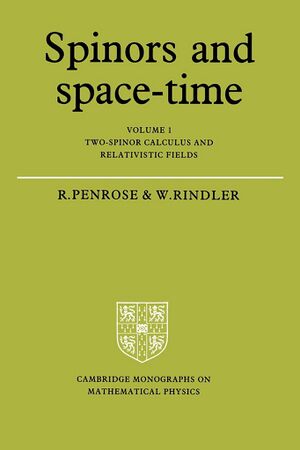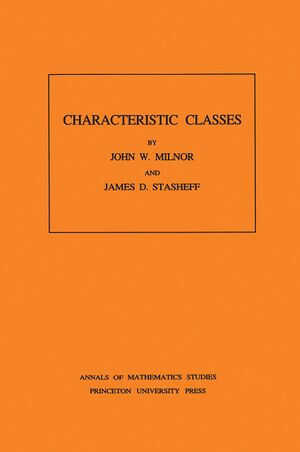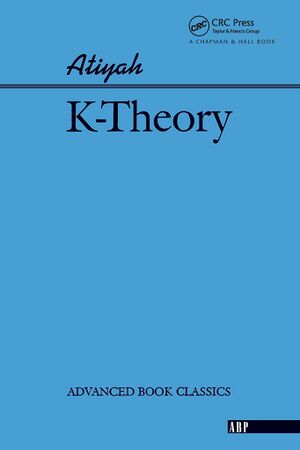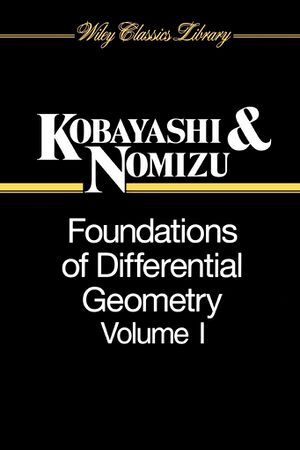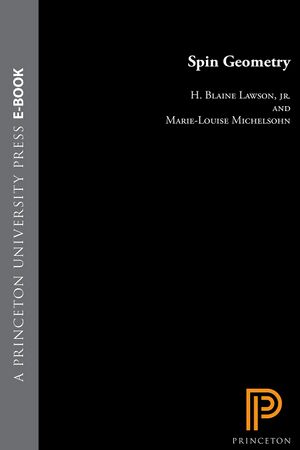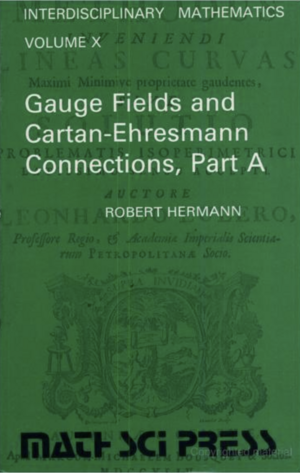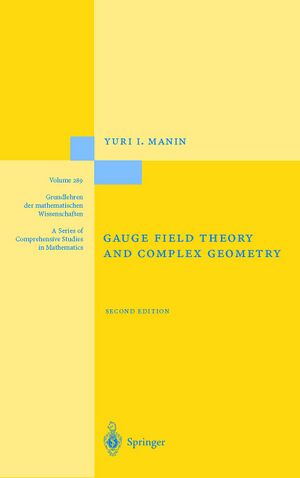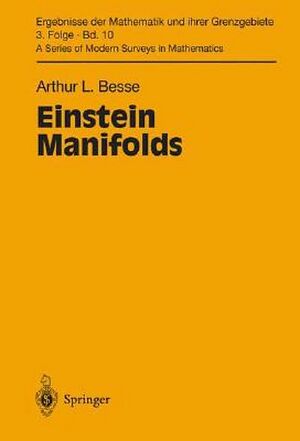The Classical Theory of Fields (Book): Difference between revisions
(added some descriptions of the reference books) |
mNo edit summary |
||
| Line 24: | Line 24: | ||
Finally, Yang-Mills by Atiyah. These lecture notes introduce some of the early results of the theory like the construction of instanton solutions and the conversion of these equations to Penrose's complex-geometry Twistor setting in a notation familiar to physicists, in coordinates, matrices, quaternions. As you will see in studying the mathematical aspects of Yang-Mills theory (YM) on 4-dimensional space-time, this dimension is particularly interesting. Penrose's book on Spinors and Space-Time shows this uniqueness in another way, converting the tensor calculus of GR into spinor calculus, another equally geometric formulation but specific to this dimension. He shows that the equations of both EM and GR can be put in this setting, and in his second volume expands on this to his Twistor-space formulation of particle physics. Milnor's Characteristic Classes and Atiyah's K-theory books pick up where Bott & Tu left off and characterize the algebra of vector bundles in two different ways. Characteristic classes are the language by which curvature and an invariant polynomial on a Lie group are associated to an underlying class of a vector bundle, which is the hinted combination of curvature and differential forms from earlier. This is used to count a deformation-invariant type of gauge theoretic state, and is known as a topological quantum number in quantum field theory and condensed matter physics. K-theory as another fundamental invariant looks at vector bundles with a fixed type of geometric structure but over all dimensions, meaning e.g. it describes properties of the rotation or unitary groups that are 'stable' in all dimensions. It has a subtle meaning, but is connected to spinors and Clifford algebras via Bott periodicity. | Finally, Yang-Mills by Atiyah. These lecture notes introduce some of the early results of the theory like the construction of instanton solutions and the conversion of these equations to Penrose's complex-geometry Twistor setting in a notation familiar to physicists, in coordinates, matrices, quaternions. As you will see in studying the mathematical aspects of Yang-Mills theory (YM) on 4-dimensional space-time, this dimension is particularly interesting. Penrose's book on Spinors and Space-Time shows this uniqueness in another way, converting the tensor calculus of GR into spinor calculus, another equally geometric formulation but specific to this dimension. He shows that the equations of both EM and GR can be put in this setting, and in his second volume expands on this to his Twistor-space formulation of particle physics. Milnor's Characteristic Classes and Atiyah's K-theory books pick up where Bott & Tu left off and characterize the algebra of vector bundles in two different ways. Characteristic classes are the language by which curvature and an invariant polynomial on a Lie group are associated to an underlying class of a vector bundle, which is the hinted combination of curvature and differential forms from earlier. This is used to count a deformation-invariant type of gauge theoretic state, and is known as a topological quantum number in quantum field theory and condensed matter physics. K-theory as another fundamental invariant looks at vector bundles with a fixed type of geometric structure but over all dimensions, meaning e.g. it describes properties of the rotation or unitary groups that are 'stable' in all dimensions. It has a subtle meaning, but is connected to spinors and Clifford algebras via Bott periodicity. | ||
Kobayashi & Nomizu's book series is like a sequel to Sternberg's lectures in that its focus is on the definitions of geometric structures rather than algebraic invariants, and begins on connection theory where Sternberg's book ends. It also describes characteristic classes in an alternate way, via the Chern-Weil homomorphism with its starting point being curvature and connections rather than abstract algebraic invariants (since Milnor only references the curvature story in his appendix). Here, we can also get an impression of how gauge theory began in mathematics independently of its current incarnation in particle physics. Lie groups are the simplest curved spaces without the unnecessary restriction to two dimensions (there are no nonabelian 2-dimensional Lie groups), and their quotients offer alternative definitions of important topological spaces such as spheres, Grassmannians, Euclidean and Hyperbolic spaces. Continuing with Sternberg's explanation of the structure of Euclidean spaces, all of these 'symmetric spaces' and homogeneous spaces come with some naturally-equipped structures such as invariant 1-forms or metrics which are generalized to other compact Lie groups and used to give the most concrete constructions of curvature or other functions available in differential geometry. These spaces then became the starting point for more general bundle theory, as they are also equipped with natural bundles. Unlike these spaces, curvature in GR is not generally uniform and dynamically varies with the matter content of space-time. As such, Gauge theory is also equipped with the language to describe more general curvatures on manifolds. | Kobayashi & Nomizu's book series is like a sequel to Sternberg's lectures in that its focus is on the definitions of geometric structures rather than algebraic invariants, and begins on connection theory where Sternberg's book ends. It also describes characteristic classes in an alternate way, via the Chern-Weil homomorphism with its starting point being curvature and connections rather than abstract algebraic invariants (since Milnor only references the curvature story in his appendix). Here, we can also get an impression of how gauge theory began in mathematics independently of its current incarnation in particle physics with Ehresmann, Weyl, and Cartan. Lie groups are the simplest curved spaces without the unnecessary restriction to two dimensions (there are no nonabelian 2-dimensional Lie groups), and their quotients offer alternative definitions of important topological spaces such as spheres, Grassmannians, Euclidean and Hyperbolic spaces. Continuing with Sternberg's explanation of the structure of Euclidean spaces, all of these 'symmetric spaces' and homogeneous spaces come with some naturally-equipped structures such as invariant 1-forms or metrics which are generalized to other compact Lie groups and used to give the most concrete constructions of curvature or other functions available in differential geometry. These spaces then became the starting point for more general bundle theory, as they are also equipped with natural bundles. Unlike these spaces, curvature in GR is not generally uniform and dynamically varies with the matter content of space-time. As such, Gauge theory is also equipped with the language to describe more general curvatures on manifolds. | ||
Spin geometry specializes back to Riemannian geometry. | Spin geometry specializes back to Riemannian geometry. | ||
Revision as of 00:29, 3 February 2024
| Fields | |
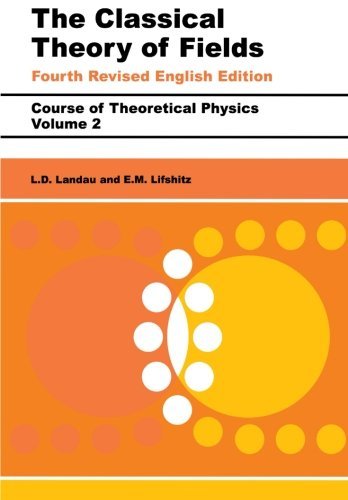
| |
| Information | |
|---|---|
| Author | Lev Landau |
| Language | English |
| Series | Course of Theoretical Physics |
| Publisher | Butterworth Heinemann |
| Publication Date | 1975 |
| Pages | 402 |
| ISBN-13 | 978-0-7506-2768-9 |
The Classical Theory of Fields represents another major challenge for the mathematical and physical maturity of the reader. Understanding the application of relativity requires setting aside the Galilean idea of time and assuming the formalism of change of basis from linear algebra to describe basic physical quantities such as vector and tensor fields in space-time. Least action functions similarly to mechanics, action being measured by integrals along trajectories, but differs in there being no absolute time to integrate against. Due to this least action approach, Electromagnetism (EM) is described starting from a four-vector potential rather than the usual Electric and Magnetic fields as they do not exist geometrically on space-time (and because the potential more simply integrates with the action). Culminating in General Relativity, physics in curved space is described with covariant derivatives, Christoffel symbols, parallel transport, and phenomena such as gravitational waves and black holes are derived. This text marks another nail in the coffin of non-geometric physics and strongly urges the reader to pursue differential geometry, and aids in that process by applying indicial tensor calculus.
Let us now describe the mathematical applications. The first two books, by Sternberg and Bott & Tu are the most fundamental and immediately accessible. While as our list shows, every single area of physics has a unique differential-geometric formulation, General Relativity is unique in having it be the driving force during its conception rather than completed after the physics. This resulted in a still large common language between physicists (general relativists) and differential geometers of metric tensors, differential forms, tensor contraction, curvature and parallel transport... Sternberg's texts are some of the only mathematical ones oriented towards this physical application, as the first chapter is tensor/multilinear algebra rather than topology, the material throughout translates to the computations in Landau 2, and Sternberg's book ends on an abstract discussion of curvature/geometric structures on manifolds. Bott & Tu expands greatly on one of the topics within Sternberg's book - integration of differential forms. While tensors and indices are used in a metric-centric way in relativistic physics, differential forms have a topological existence and characterize invariants of the underlying manifold with or without a metric. This language and the algebraic manipulation of these invariants becomes the other half of the lingua franca of gauge theory, while General Relativity (GR) prepared you for the curvature component. Sternberg's second book makes this transition from ordinary metric/intrinsic/GR curvature into the type of curvature in general Gauge theory and Yang-Mills gauge theory beginning from the simple 2-dimensional surface case. It also recaps the differential-geometric formulation of GR, if you had not drawn the parallels during your reading of Lectures on Differential Geometry.
Finally, Yang-Mills by Atiyah. These lecture notes introduce some of the early results of the theory like the construction of instanton solutions and the conversion of these equations to Penrose's complex-geometry Twistor setting in a notation familiar to physicists, in coordinates, matrices, quaternions. As you will see in studying the mathematical aspects of Yang-Mills theory (YM) on 4-dimensional space-time, this dimension is particularly interesting. Penrose's book on Spinors and Space-Time shows this uniqueness in another way, converting the tensor calculus of GR into spinor calculus, another equally geometric formulation but specific to this dimension. He shows that the equations of both EM and GR can be put in this setting, and in his second volume expands on this to his Twistor-space formulation of particle physics. Milnor's Characteristic Classes and Atiyah's K-theory books pick up where Bott & Tu left off and characterize the algebra of vector bundles in two different ways. Characteristic classes are the language by which curvature and an invariant polynomial on a Lie group are associated to an underlying class of a vector bundle, which is the hinted combination of curvature and differential forms from earlier. This is used to count a deformation-invariant type of gauge theoretic state, and is known as a topological quantum number in quantum field theory and condensed matter physics. K-theory as another fundamental invariant looks at vector bundles with a fixed type of geometric structure but over all dimensions, meaning e.g. it describes properties of the rotation or unitary groups that are 'stable' in all dimensions. It has a subtle meaning, but is connected to spinors and Clifford algebras via Bott periodicity.
Kobayashi & Nomizu's book series is like a sequel to Sternberg's lectures in that its focus is on the definitions of geometric structures rather than algebraic invariants, and begins on connection theory where Sternberg's book ends. It also describes characteristic classes in an alternate way, via the Chern-Weil homomorphism with its starting point being curvature and connections rather than abstract algebraic invariants (since Milnor only references the curvature story in his appendix). Here, we can also get an impression of how gauge theory began in mathematics independently of its current incarnation in particle physics with Ehresmann, Weyl, and Cartan. Lie groups are the simplest curved spaces without the unnecessary restriction to two dimensions (there are no nonabelian 2-dimensional Lie groups), and their quotients offer alternative definitions of important topological spaces such as spheres, Grassmannians, Euclidean and Hyperbolic spaces. Continuing with Sternberg's explanation of the structure of Euclidean spaces, all of these 'symmetric spaces' and homogeneous spaces come with some naturally-equipped structures such as invariant 1-forms or metrics which are generalized to other compact Lie groups and used to give the most concrete constructions of curvature or other functions available in differential geometry. These spaces then became the starting point for more general bundle theory, as they are also equipped with natural bundles. Unlike these spaces, curvature in GR is not generally uniform and dynamically varies with the matter content of space-time. As such, Gauge theory is also equipped with the language to describe more general curvatures on manifolds.
Spin geometry specializes back to Riemannian geometry.
Applications
Differential Forms in Algebraic Topology
Differential Forms in Algebraic Topology by Raoul Bott and Loring Tu.
Foundations of Differential Geometry
Foundations of Differential Geometry by Shoshichi Kobayashi and Katsumi Nomizu.
Gauge Fields and Cartan-Ehresmann Connections
Gauge Fields and Cartan-Ehresmann Connections by Robert Hermann.

